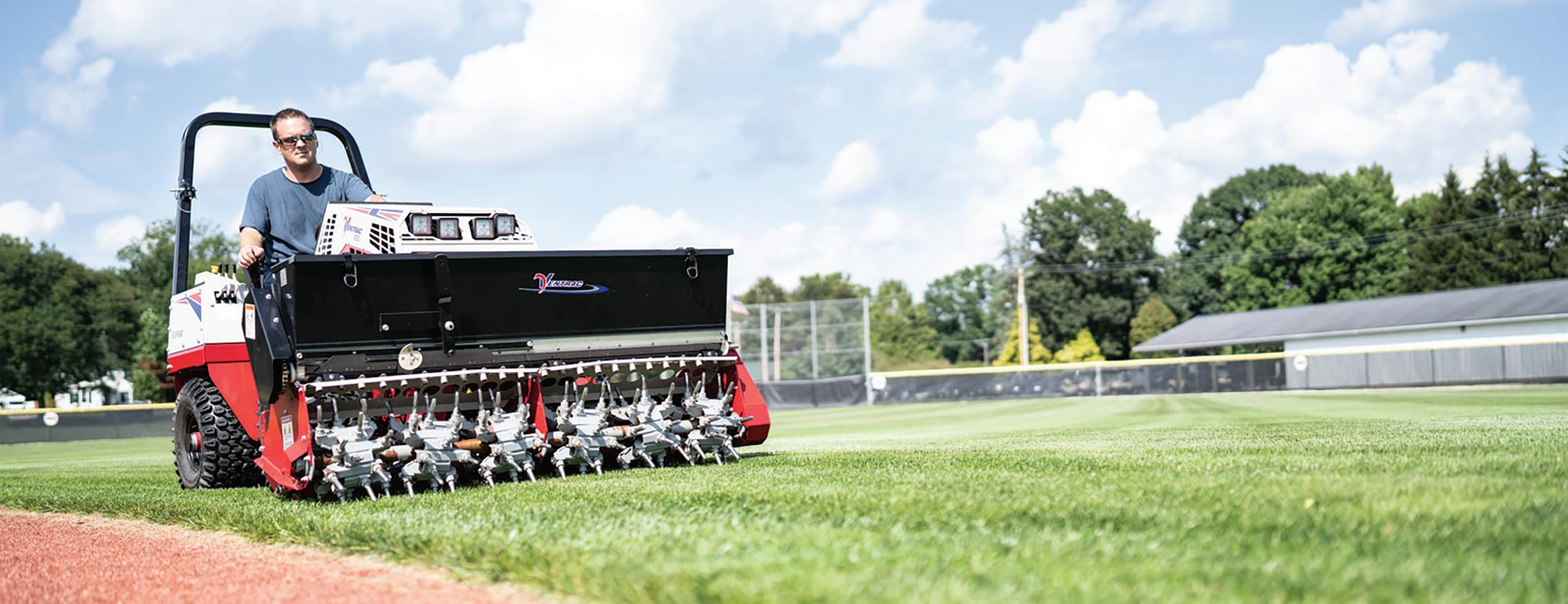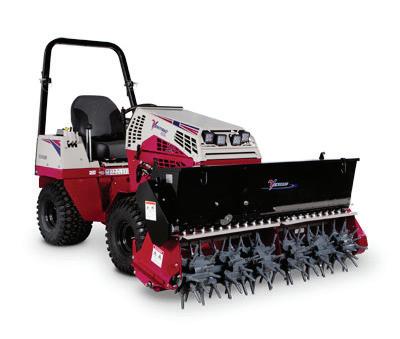
























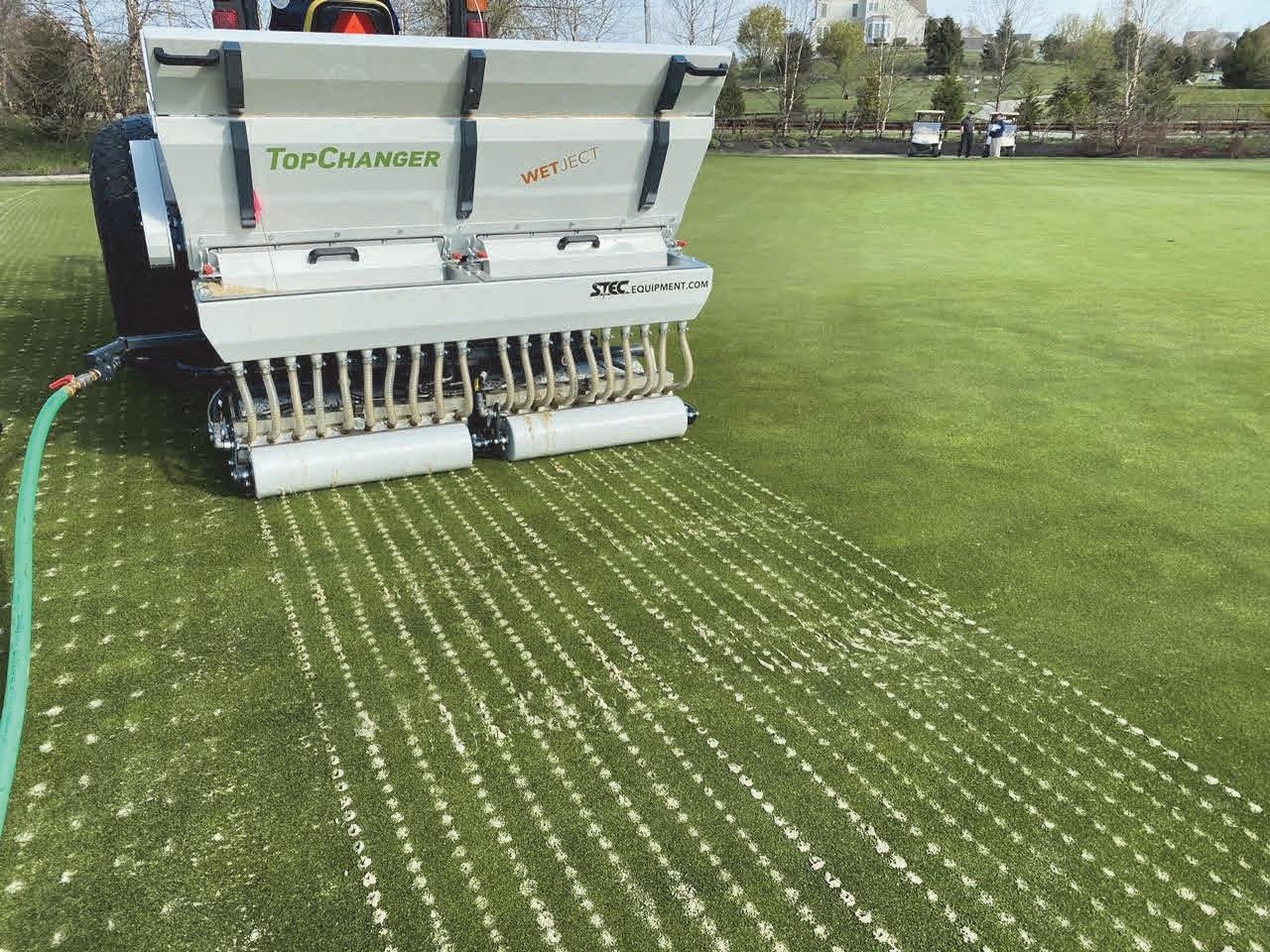








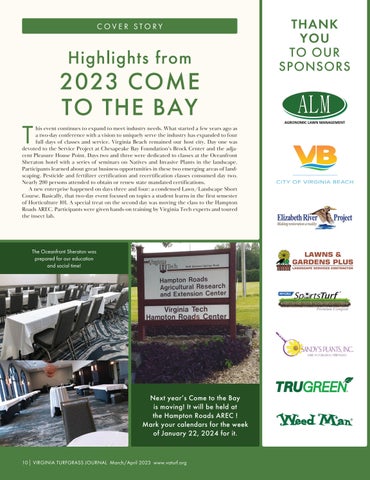



































Phil Bailey, CGCS VTC President
past few months have been extremely active for the Virginia Turfgrass Council (VTC) and the Virginia Turfgrass Council Environmental Institute (VTC-EI). Providing Service to our communities, education to our members, recertification for licensing and showcasing outstanding contributions by members in our industry top our list.
The Come to the Bay Service Project allowed us to highlight our best management practices by repurposing a bioswale for the Chesapeake Bay Foundation. The project consisted of removing undesirable plants, amending the root zone, and planting appropriate natives and pollinator plants. This project also involved students from Virginia Beach Schools that helped install 5000 American Beach Grass plants along the Lynnhaven inlet. The Service project was spearheaded by Wes and Paula Bray of Lawns and Gardens Plus and Michael Moore of Virginia Beach Parks and Recreation.
The programs, education, and speakers at the Come to Bay Conference were outstanding. The conference covered invasive plants, pesticide, and fertilizer recertification. An outstanding two-day Lawn and Landscape short course was added with enthusiastic participation. Notable professors in turf, soils, entomology, arboriculture and weed science lectured.
A wonderful day was spent at the Crossings in Glen Allen Virginia for our M.A.T.E. Conference. The major focus for this conference was “Buffers in the Landscape.” The topics covered suitable soils for buffers, environmental benefits of buffers, tree buffers and turfgrass buffers. The Virginia Department of Forestry detailed Virginia’s new Watershed Program while the Virginia Department of Conservation and Recreation highlighted regulations and benefits of buffers. Wes Bray of Lawns and Gardens Plus was selected for the President’s Award for his continued and long-term investment to the turfgrass industry.
People such as Wes Bray and yourselves are what make the VTC the success that it is. Our ability as a Team and Industry is to assist colleagues to better themselves through education, licensing, showcasing their stewardship and representing them to legislators and governmental decision makers. Without your continued support the VTC wouldn’t be able to offer these benefits for its’ members. Please remember to update your membership, donate to the VTC-EI and join us at a community service event.
Thank you,
Phil Bailey VTC PresidentP.O. Box 5989
Virginia Beach, VA 23471
Office: (757) 464-1004
Fax: (757) 282-2693
vaturf@verizon.net
PUBLISHED BY Leading Edge Communications, LLC 206 Bridge Street, Suite 200 Franklin, Tennessee 37064 (615) 790-3718
Fax: (615) 794-4524
info@leadingedgecommunications.com
VTC OFFICERS President Phil Bailey, CGCS Isle of Wight County Parks & Recreation (757) 572-1981
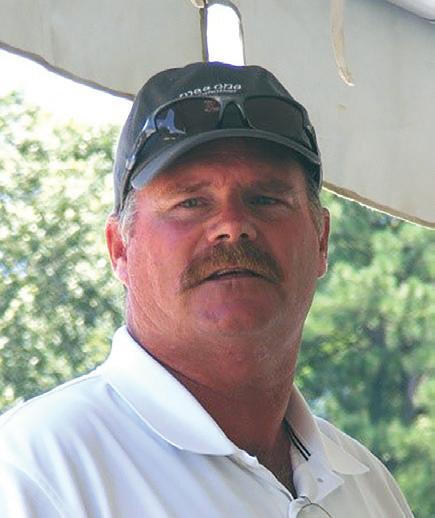
Vice President
Wes Bray Lawns & Gardens Plus (757) 422-2117
Secretary / Treasurer
Jimmy Viars, CGM
Gloucester County Public Schools (804) 815-2779
VTC DIRECTORS
Sam Burris
Ray Funkhouser
Tony Montgomery
Bruce Sheppard
T.J. Skirsky
Harris Wheeler, CTP
Craig Zeigler
VTC ADVISORY MEMBERS OF THE BOARD
Mike Goatley, Ph.D. (Chair)
Shawn Askew, Ph.D.
Alejandro Del Pozo-Valdiva, Ph.D.
Jeffrey Derr, Ph.D.
David McCall Ph.D.
Dan Sandor, Ph.D.
Cynthia Smith, Ph.D.
EXECUTIVE DIRECTOR / DIRECTOR OF PROGRAMS
Tom Tracy, Ph.D. (757) 464-1004
VIRGINIA TURFGRASS FOUNDATION
Brandyn Baty (757) 585-3058



Written January 19, 2023
Tom Tracy, Ph.D. VTC Executive Director
Stan Stagg died a few days ago. His obituary was in yesterday’s paper. Stan is a turf and lawn legend in Virginia Beach and Norfolk. His business specialized in helping clients establish and maintain golf course quality lawns. Yeah, he was that good.
Last summer, the signs were ominous: his latest cancer attack was without mercy. Although he successfully fought this crippling disease for nearly a decade, the finality of the latest surge was evident. Treatments robbed him of his voice and prevented him from being outside. Shame. He loved conversation and enjoying the beauty of God’s creation.
Stan was a fighter.
His pesticide applicator certification was expiring at the end of June and he needed a class to meet recertification requirements. He knew about the program we were conducting at the Hampton Roads AREC. He attended that event many times throughout the decades. Mostly held outdoors, under a merciless summer sun, the training class was an annual tradition, and Stan was a regular fixture at the front of the crowd soaking up the latest studies and asking insightful questions.
Two years ago, Dr. Derr, head of the Hampton Roads AREC, understood Stan’s health concerns and made sure he had a seat in the cab of the water truck that followed the 200 participants as they moved from research plot to research plot. Stan could still hear, but his cherished spot in front of the crowd was taken by another.
Stan contacted me last spring. He wanted to attend the annual recertification class but even the provision of an air-conditioned truck was not adequate. He needed to remain indoors.
An online class (several are available) was not possible. Stan wanted to be with people – not alone staring at a computer screen.
“Do you have another class I can attend? I need it before June 30 or else I will lose my pesticide license,” his email read.
“We have one,” I replied, “but it is a private event for TruGreen at their Norfolk facility. I’ll check with them. Perhaps they will allow you to attend.”
“My wife needs to be with me to care for some of my physical needs,” he typed back. I could hear the sheepishness in his words.
“Of course!” was the answer from TruGreen’s manager when I told them of the situation and asked if Stan and his wife could attend their pesticide recertification class.
Stan and his wife arrived on time. No surprises there. His weakness and cancer’s toll on his body were obvious. He walked slowly and deliberately and he “talked” through a mini-white board and markers. They sat in the back of the training room. During breaks, Stan made his way to me and used the white board to ask questions and to make insightful comments on the lesson.
Everyone knew this would be Stan’s last recertification class. The disease would not allow him to attend another. He lived just six more months.
It is always about people.
Jeff Derr, the leaders at TruGreen, and many others enabled Stan to maintain his dignity and pesticide applicator credentials to the end. They could have said “No. It is too much of a bother.” They didn’t. They, and many others, recognized the importance of the individual.
We work in a great industry.
Shawn D. Askew, Ph.D. Virginia Tech 435 Old Glade Road Blacksburg, VA 24061 540-231-5807
askew@vt.edu
Alejandro Del Pozo-Valdiva, Ph.D. Virginia Tech Hampton Roads
Agricultural Research Station 1444 Diamond Springs Rd. Virginia Beach, VA 23455 757-363-3900 adelpozo@vt.edu
Jeffrey F. Derr, Ph.D. Virginia Tech Hampton Roads Agricultural Research Station 1444 Diamond Springs Rd. Virginia Beach, VA 23455 757-363-3912 jderr@vt.edu
Mike Goatley Jr., Ph.D. Virginia Tech 420 Smyth Hall Blacksburg, VA 24061 540-231-2951 goatley@vt.edu
David McCall, Ph.D. Virginia Tech 435 Old Glade Road Blacksburg, VA 24061 540-231-9598 dsmccall@vt.edu
Dan Sandor, Ph.D. Virginia Tech 170 Drillfield Dr. 411 Price Hall Blacksburg, VA 24061 540-231-9775 dsandor@vt.edu
WITH SUPPORT FROM:
Thomas P. Kuhar, Ph.D. Virginia Tech Dept. of Entomology 216 Price Hall 170 Drillfield Drive Blacksburg, VA 24061 540-231-6129
tkuhar@vt.edu


This event continues to expand to meet industry needs. What started a few years ago as a two-day conference with a vision to uniquely serve the industry has expanded to four full days of classes and service. Virginia Beach remained our host city. Day one was devoted to the Service Project at Chesapeake Bay Foundation’s Brock Center and the adjacent Pleasure House Point. Days two and three were dedicated to classes at the Oceanfront Sheraton hotel with a series of seminars on Natives and Invasive Plants in the landscape. Participants learned about great business opportunities in these two emerging areas of landscaping. Pesticide and fertilizer certification and recertification classes consumed day two. Nearly 200 persons attended to obtain or renew state mandated certifications.

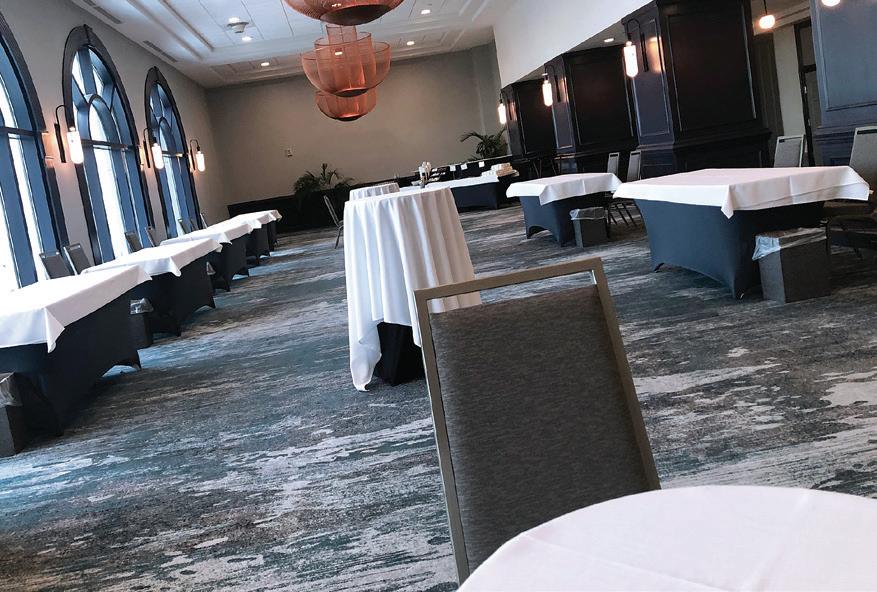
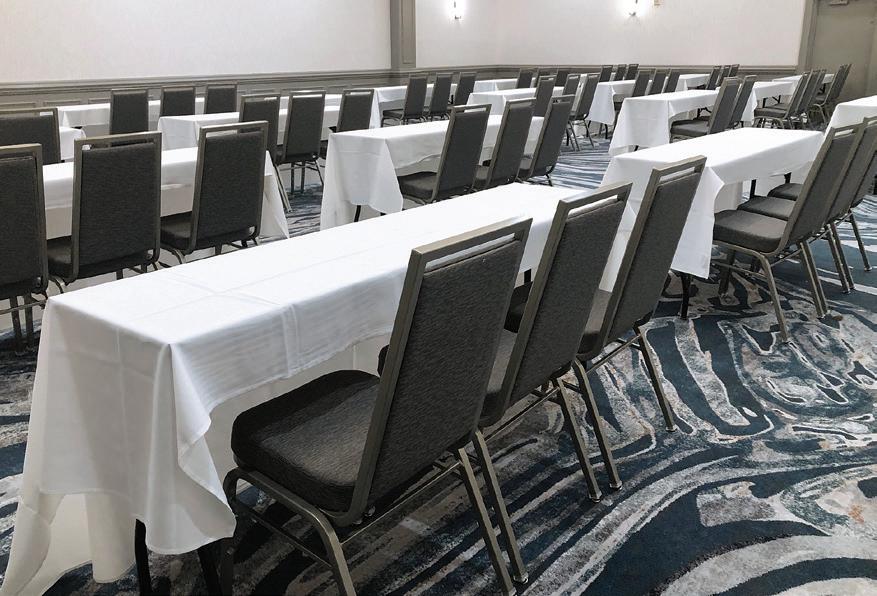
A new enterprise happened on days three and four: a condensed Lawn/Landscape Short Course. Basically, that two-day event focused on topics a student learns in the first semester of Horticulture 101. A special treat on the second day was moving the class to the Hampton Roads AREC. Participants were given hands-on training by Virginia Tech experts and toured the insect lab.












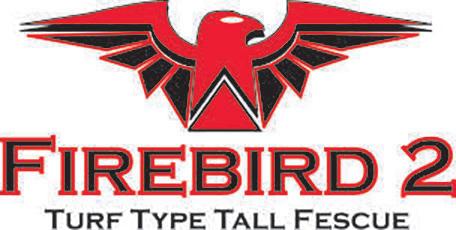









What an incredible day. I don’t know how many times I can say “thank you” as it doesn’t seem like enough. We can’t wait to watch everything grow. Thank you again for everything – it was a perfect day.
In2021, our inaugural year, we provided and planted 6,000 American Beachgrass plants at the Virginia Beach oceanfront. In the past two years, they have taken root, meshed together, and have protected valuable beaches from the ravages of many storms. Last year, we provided and planted 15,000 of those same plants at a City of Virginia Beach boat ramp off Shore Drive; dramatically located beneath Lesner Bridge. While a winter storm took about a fifth of those plants out to sealandscaping the Chesapeake Bay, no doubt - the remaining plants took root and are doing their job of protecting the Lynnhaven River where it meets open water.
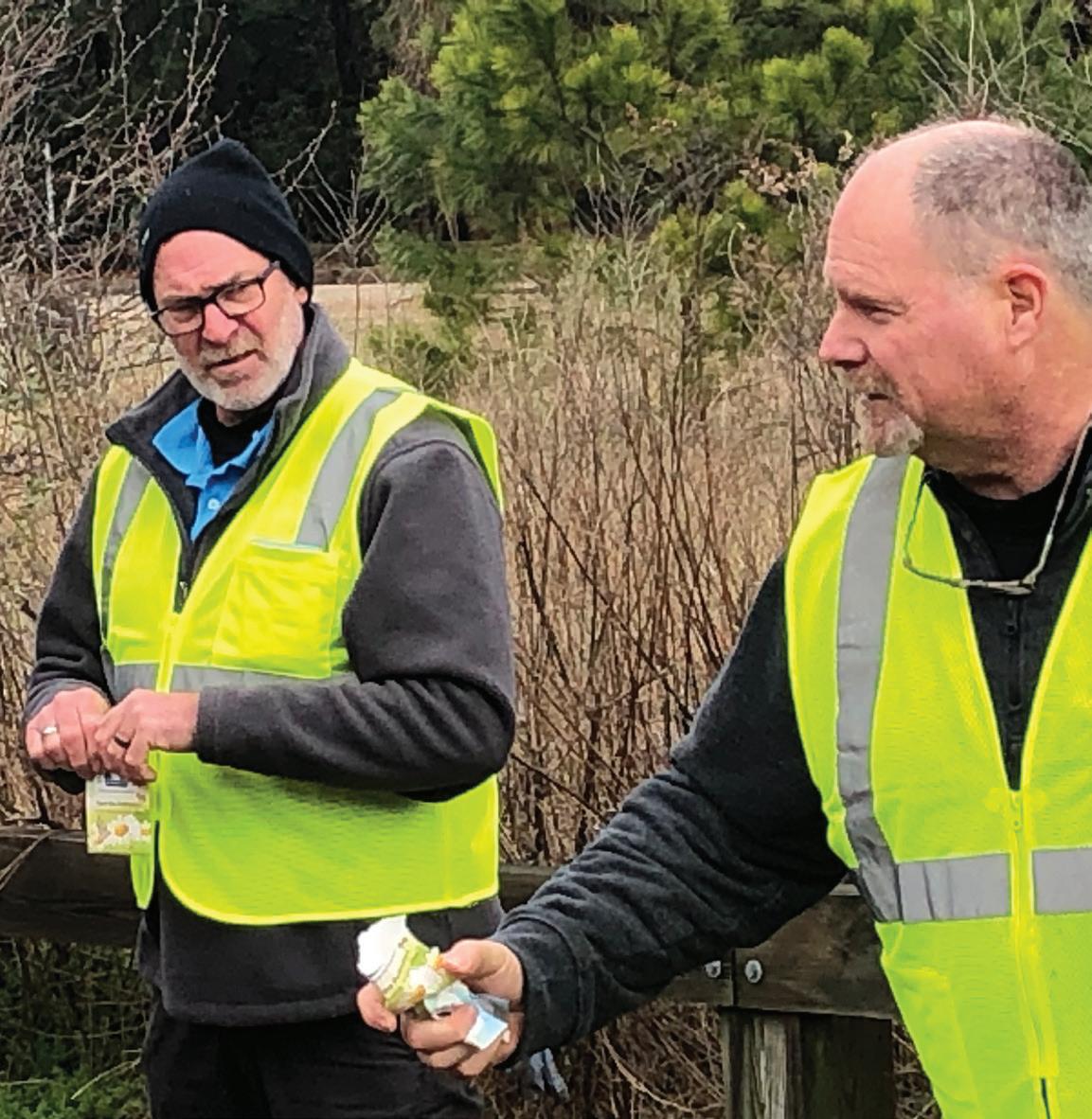
The 2023 Service Project was the most ambitious of them all. On Monday, January 23 we restored a 1,700 square foot bioswale at the entrance of Pleasure House Point and the Chesapeake Bay Foundation’s Brock Center. In addition to clearing the bioswale of invasive plants and planting appropriate perennials and selfseeding annuals, once again we provided and planted American Beachgrass plants. The bioswale project restored a failed engineering feature to its original purpose. Grass plants will prevent erosion and reduce foot traffic in areas designated for turtles and other wildlife.
As in 2022, the 2023 Service Project concluded with presentations by City of Virginia Beach Public School Environmental Studies students. These high school juniors and seniors researched an ecological topic (bioswales), expertly presented the topic, and fielded questions from the audience.

The Service Project gets better each year!

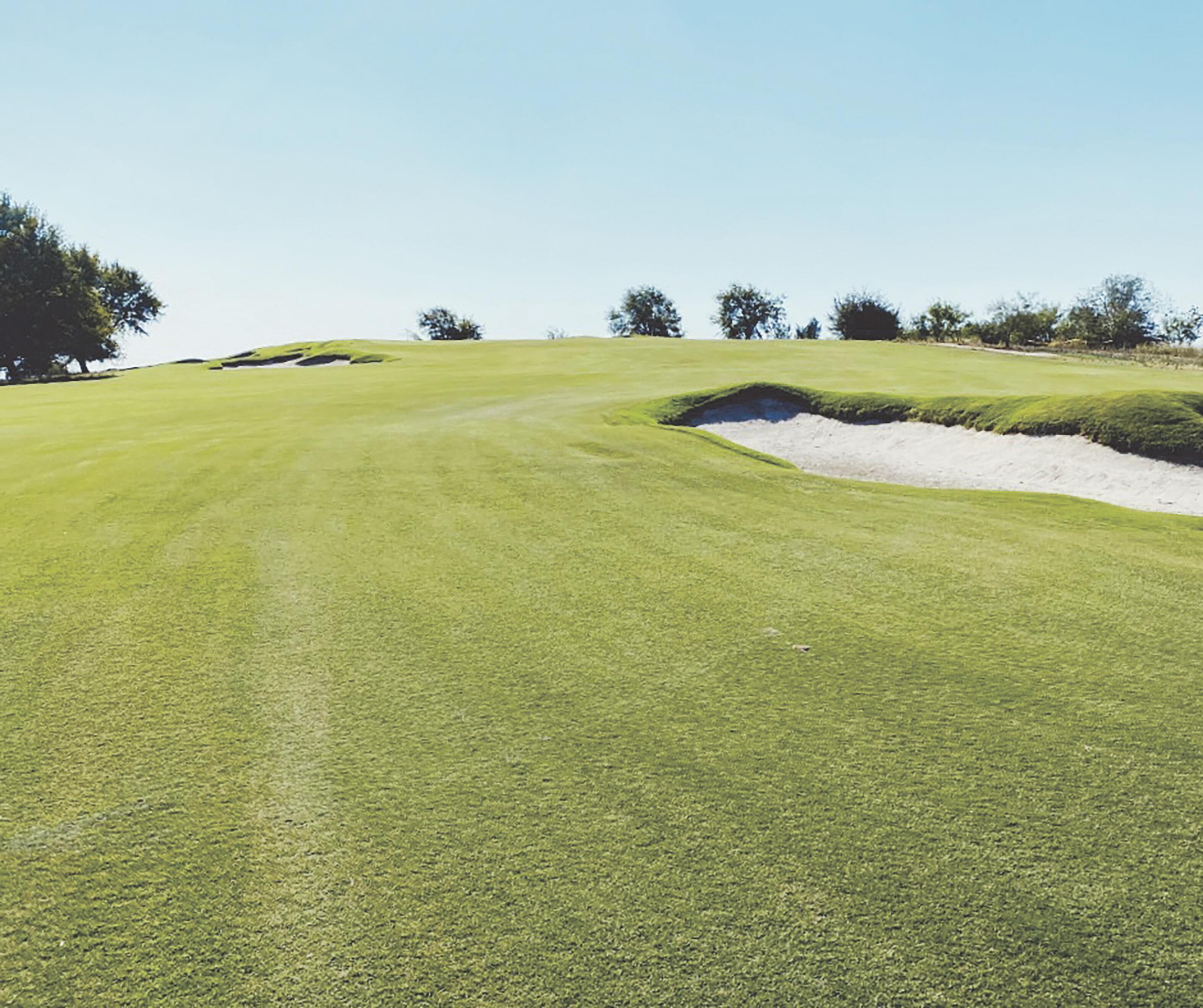

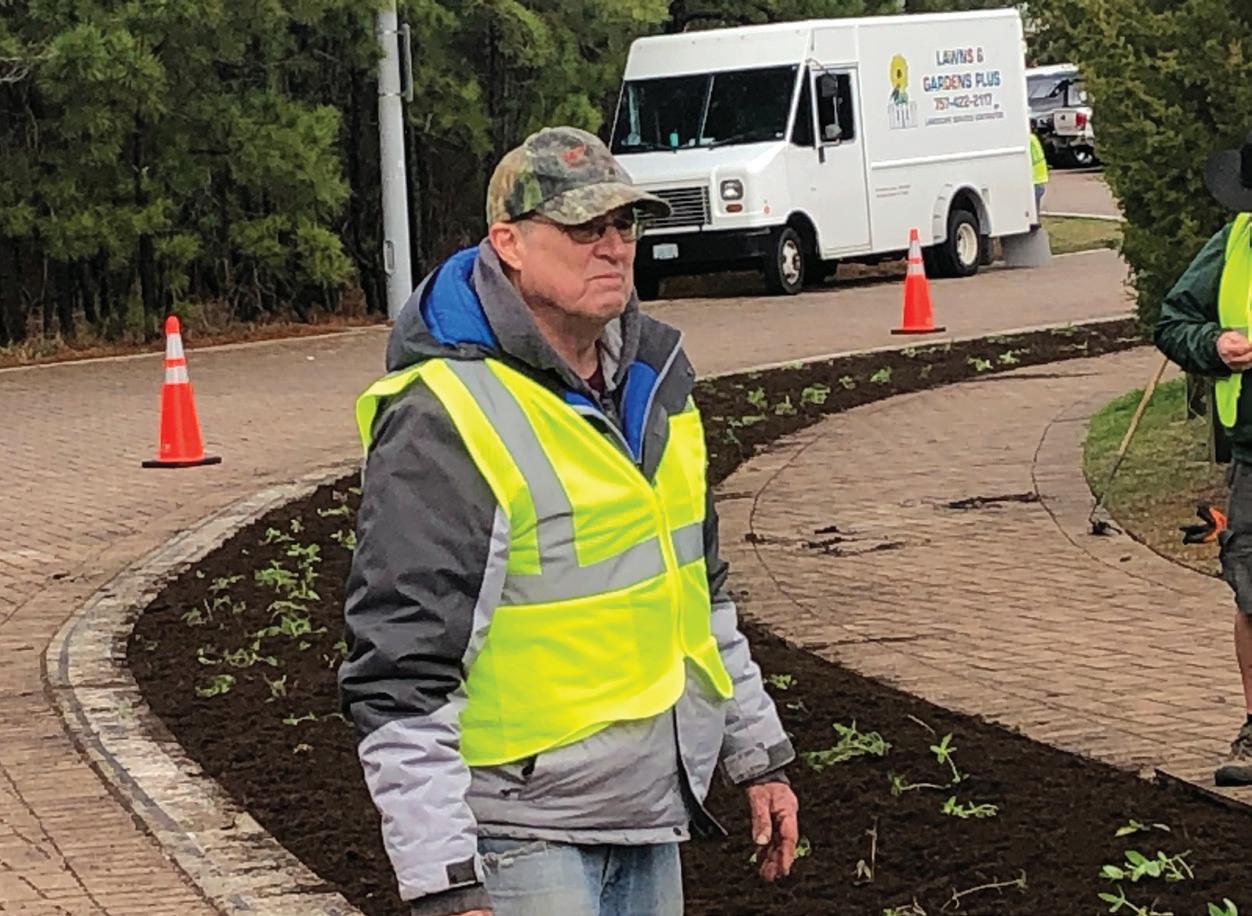


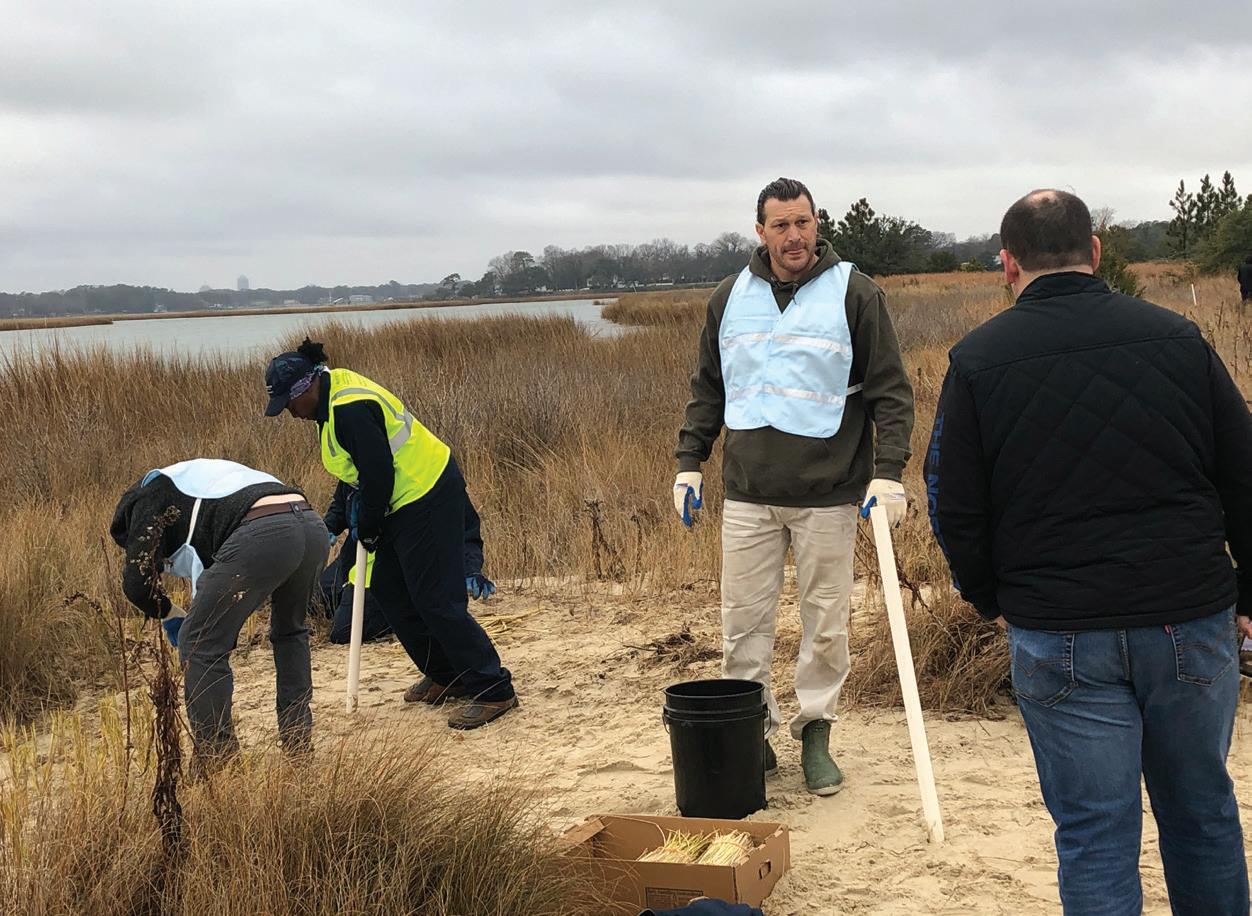


This was our second year at the Virginia Crossings Conference Center, located just north of Richmond. In addition to pesticide and fertilizer certification and recertification classes where persons obtained and renewed state mandated certifications, a series of speakers provided insights into Buffers and the Landscape. Those areas, primarily protecting Virginia’s waters are mandated by local, state, and federal regulations and provide great business opportunities for the industry.
Continuous breaks and a fantastic lunch buffet were provided by Ballard Sports, Davisson Golf, and McGill Premium Compost. Would you like to support next year’s conference? Contact us.
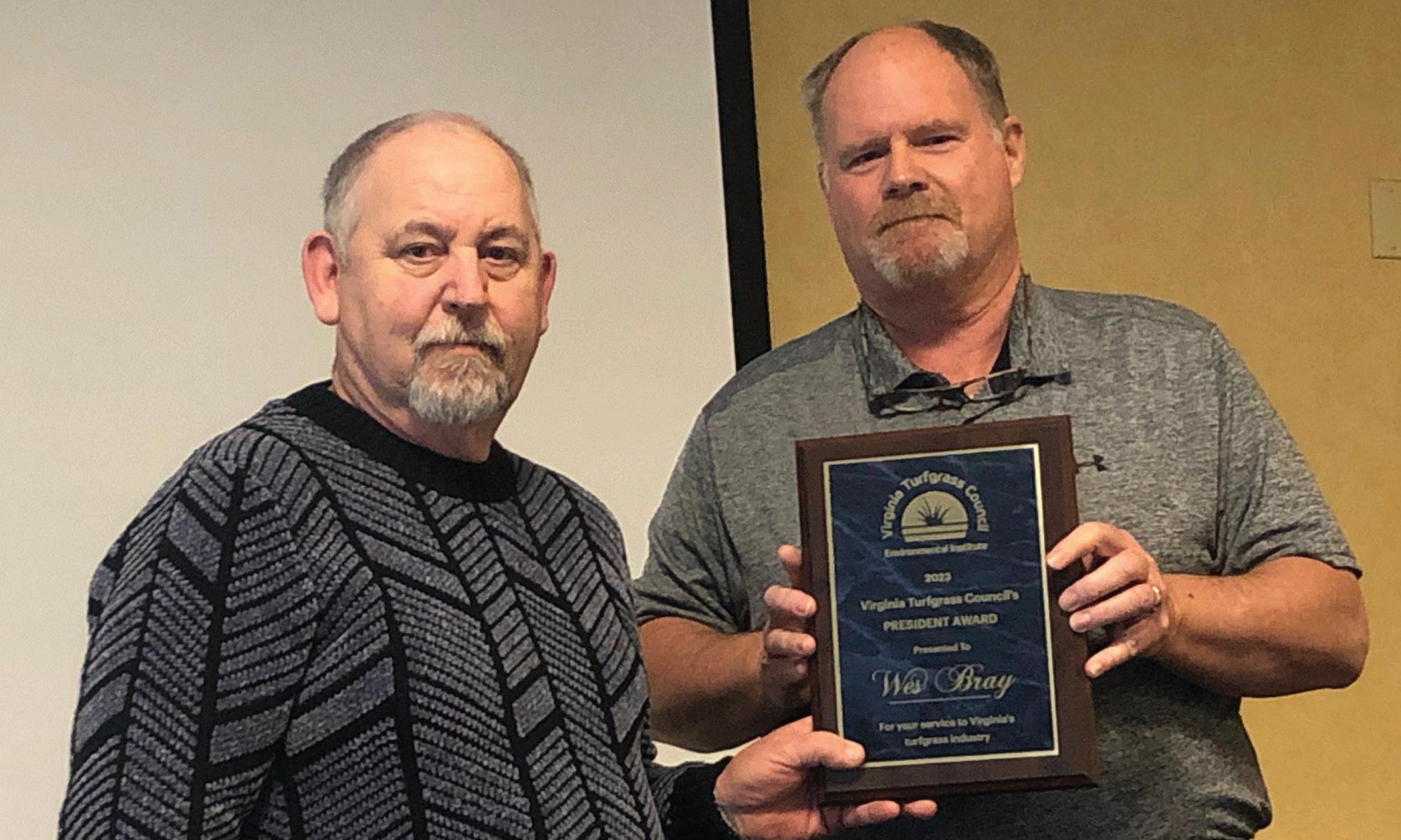
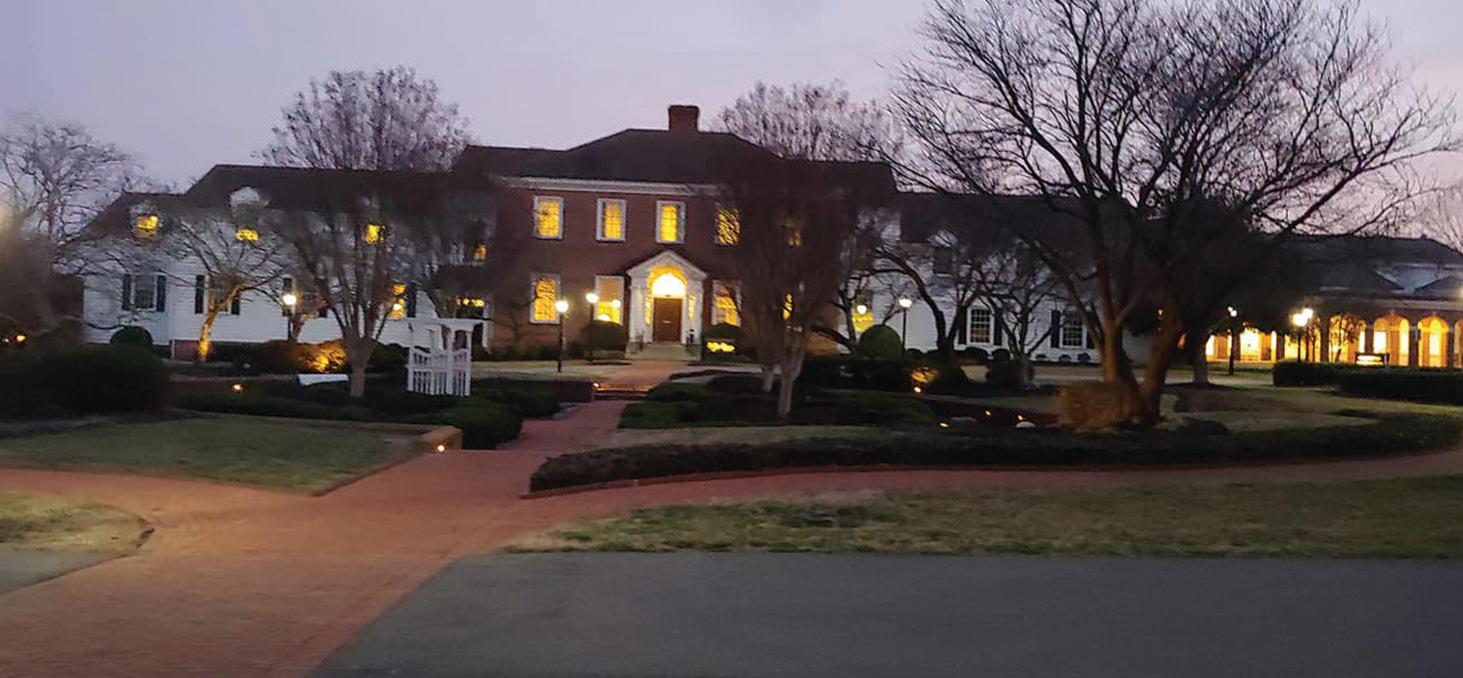

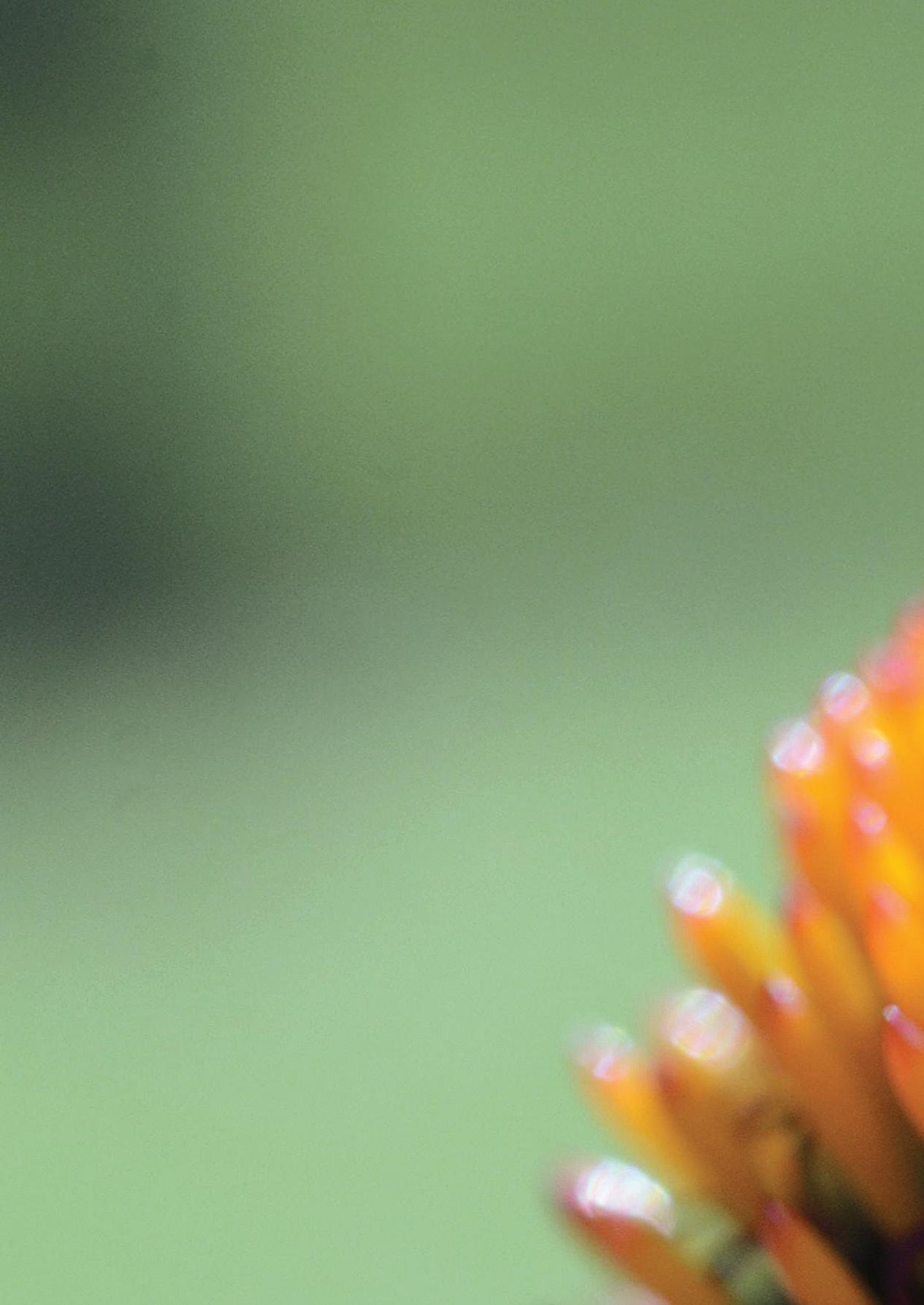
 By Margaret J. Couvillon, Ph.D. Assistant Professor of Pollinator Biology and Ecology Department of Entomology, Virginia Tech
By Margaret J. Couvillon, Ph.D. Assistant Professor of Pollinator Biology and Ecology Department of Entomology, Virginia Tech
This article is based upon the following peer-reviewed study: MC Palmersheim, R Schürch, ME O’Rourke, J Slezak, and MJ Couvillon. “If You Grow It, They Will Come: Ornamental Plants Impact the Abundance and Diversity of Pollinators and Other FlowerVisiting Insects in Gardens.” Horticulturae 8, no. 11 (2022): 1068.
precipitous, upwards to 75% by some measures, and likely a reflection of the larger threats to wildlife in general that humans have bequeathed to our world. For insect pollinators, of course, their declines have direct consequences on our global food security, as 75% of food crops need insect pollination services (Klein et al. 2007).
Plants are mostly stationary. Although they can move a little bit, growing upwards and outwards, these movements are small, slow, and generally insufficient for finding a mate, especially if you want to reproduce sexually every year. Sexual reproduction helps maintain genetic diversity in a population and is a winning strategy. Therefore, over millions of years of coevolution, plants have solved this sessile challenge by developing close relationships with some animals to serve as the vectors to transport pollen, the male sex cells. That close relationship is pollination, and about 88% of all flowering plants need that animalassist to make the magic happen (Ollerton, Winfree & Tarrant 2011). Of the animals that participate in pollination, insects are by far the most consequential. If we line up the plants, both wild and agricultural, that need pollination services, our heavy lifters are insects, such as bees, butterflies, and flies. Therefore, while birds and bats are also valuable in this process, there is a critical need for the contribution of insect pollinators (Klein et al. 2007; Ollerton 2021).
The large role of insects in plant reproduction makes their recently recorded declines even more alarming: insects in general, and pollinators in particular, are decreasing in numbers (abundance) and species richness (diversity) (Hallmann et al. 2017; Sánchez-Bayo & Wyckhuys 2019). These declines have been
Both wild and managed insect pollinators, like honey bees, face challenges from pesticides, pests, pathogens, and poor nutrition, where a lack of abundant, diverse flowers in a landscape can have direct and indirect negative consequences on insects (Goulson et al. 2015). Media and popular press coverage has been wide: everyone wants to feed hungry pollinators. One activity that is immensely popular among concerned citizens is to establish a pollinator garden, where ornamentals are planted with the express purpose of feeding pollinators. Groups ranging from schools to libraries to museums to private individuals are frequently approaching perceived experts (i.e., an Assistant Professor of Pollinator Biology) for advice on what plants to use. When I started receiving such phone calls in 2017, I realized that all I could do was direct people to existing plant recommendation lists. I quickly realized, however, that a non-specialist gardener, such as myself, might experience barriers against making informed choices about plants for pollinators. For example, recommendations from organizations like the Xerces Society publish lists that appear based on expert opinion but lack empirical backing and/or do not cite sources. There are also inconsistencies among plant recommendations, where there is very little overlap, even within regions (Garbuzov & Ratnieks 2014a). Sometimes recommendations are too general, even if we know that different cultivars might vary in as much as tenfold in their attractiveness to insects (Garbuzov & Ratnieks 2014b). Additionally, some recommended plants required greenhouses for growth from seed, which would definitely be a challenge to someone like me. Lastly, some gardeners might want to target butterflies, while another, next to an apiary, might wish to cater to honey bees. I was discouraged by the lack of available data in existing recommendations. So I decided to make my own, targeted to our Mid-Atlantic region, but hopefully also useful to gardeners everywhere.
Fortuitously at this moment, my lab was approached by Kaeser Compressors, whose USA office is based also in Virginia, because they wished to commemorate the 100th anniversary of their parent company Kaeser Kompressoren of Coburg, Germany with an environmentally-focused project benefitting the communities they serve. With Kaeser’s involvement in the food processing industry and recognizing the pollinator crisis’ broader impact on the world’s food supply, it seemed a great fit. Plus, it didn’t hurt that their corporate colors are yellow and black. With their backing and with the help of two colleagues, Drs Scoggins and O’Rourke, from another department on campus, we recruited a new graduate student, Micki Palmersheim, and started planning. We broke ground on our experimental gardens in September 2019, wrapped up the field portion of the project in August 2021 and graduated Micki a few months later, and published our research in a peer-reviewed journal in 2022 (Palmersheim et al. 2022). It has been a wonderful journey that has resulted in a tangible product that we hope will be useful to others.
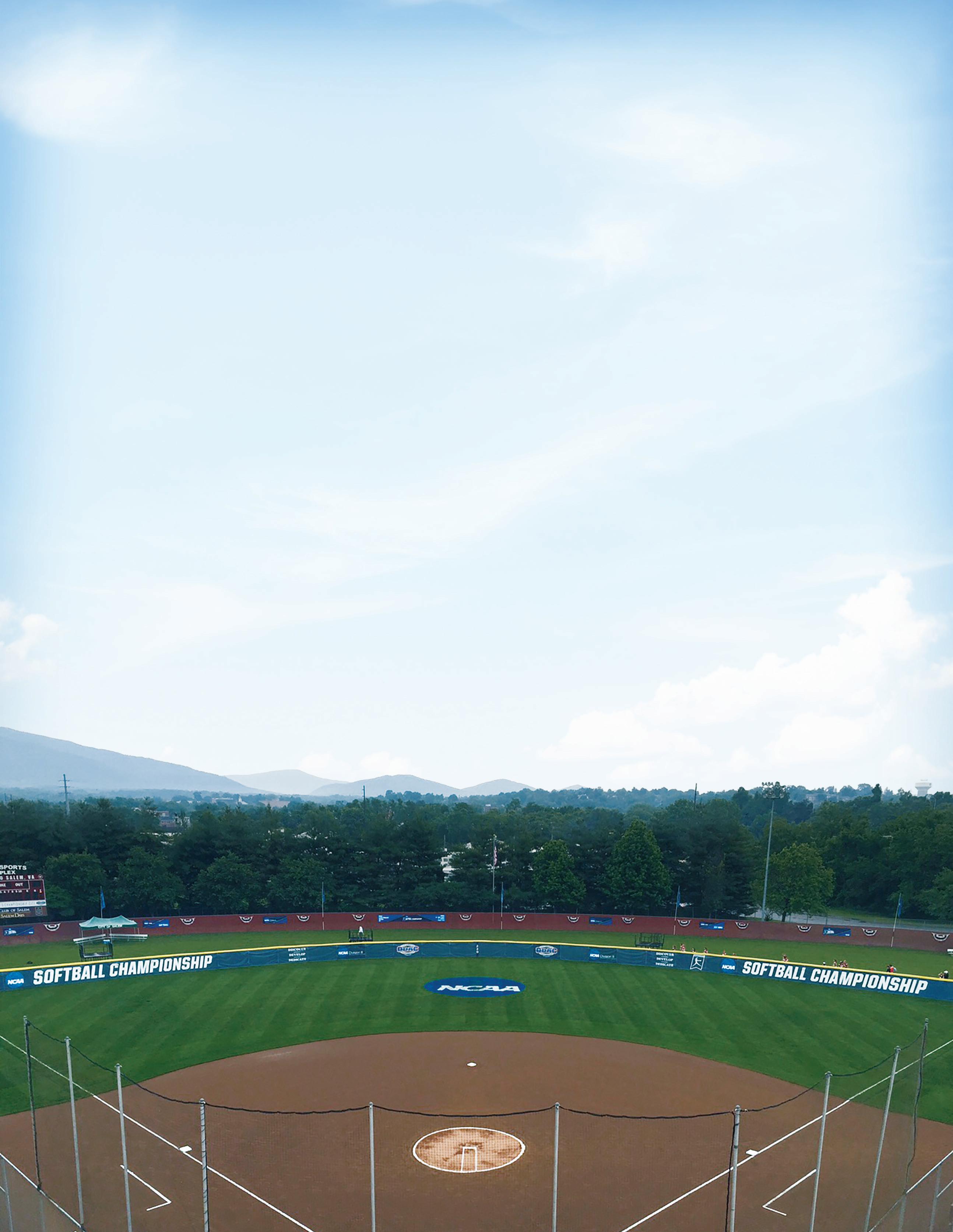
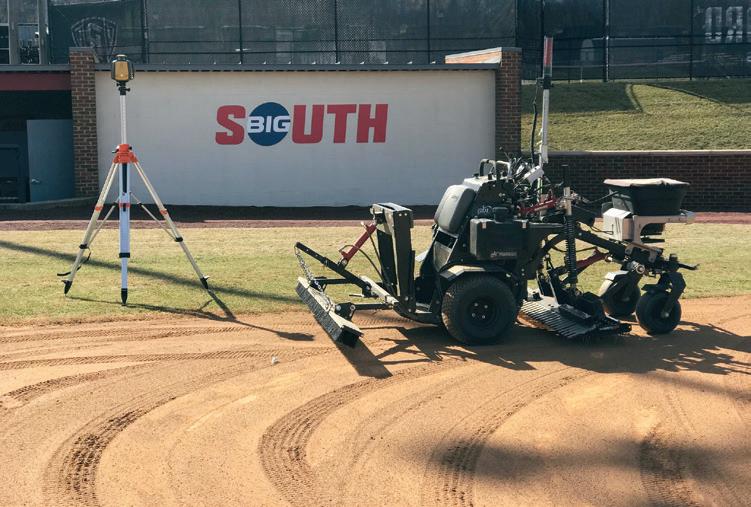







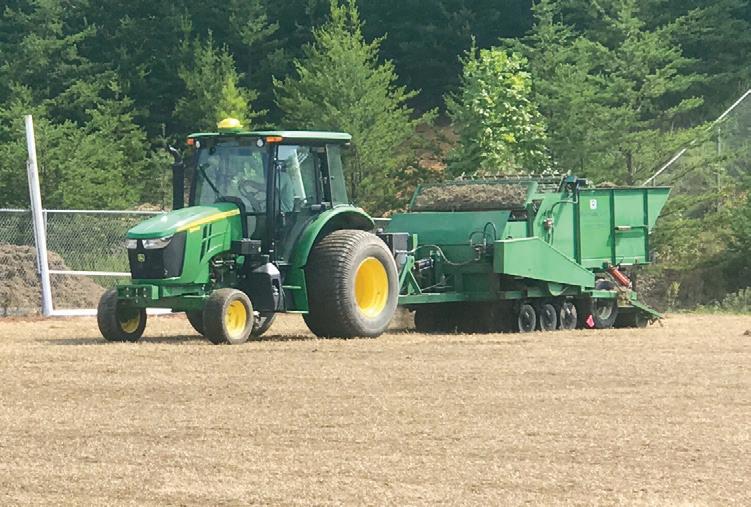
In our study, we designed, planted, and monitored two experimental gardens in Blacksburg, VA, for two summers (2020–2021). One garden was located at the Urban Horticulture Center, and the other was located at the Turfgrass Research Center (Figure 1), both affiliated with Virginia Tech. With these gardens, we investigated the effects of 25 ornamental landscape plants, readily available in nurseries, on flower-visiting insects. Plants were either native or non-native to the mid-Atlantic of the USA, and they were either perennial or annual. We surveyed the number and taxonomy of insect pollinators through non-destructive sampling and analyzed the data to determine the plants that brought

an abundance and diversity of insects to gardens. Our goal was to provide everyday gardeners with data-driven recommendations to help them create customizable, pollinator-friendly gardens. Over the two summers, we observed 26,804 insects, a majority of whom were from the insect order Hymenoptera, mostly bees (Figures 2 & 3), but also some wasps. We also saw butterflies and moths (Lepidoptera, Figure 4), flies (Diptera), beetles (Coleoptera), and some grasshoppers and crickets (Orthoptera). We could not identify some insect visitors with our methodology, but these were a small proportion of our data (Palmersheim et al. 2022).




What did we find? First and foremost – plant choice matters on both the abundance (Figure 5) and diversity (Figure 6) of garden insect pollinators. Our most visited plant in terms of numbers – the black-eyed Susan – had a 42-fold higher abundance than our least visited, the petunias. Actually, our top six plants in terms of insect abundance (black-eyed Susan, brown-eyed Susan, and Joe-Pye weed, purple coneflower (Figure 2), Helen’s flower (Figure 3), and
sedum) all received on average more than 90 visitors per plant plot (Figure 5), with the top 3 as true prize winners, with a whopping 200+ visitors per plot across a year (Palmersheim et al. 2022). And what about diversity – did the same plants that brought high abundance also bring high diversity? There was some overlap (Figure 6), as the top 6 plants were purple coneflower, zinnia, Helen’s flower, yarrow, catmint, and dwarf goldenrod.

FIGURE 5: The choice of ornamental garden plant will impact the abundance of insect visitors to a garden. The horizontal axis displays the plants included in our study, and the vertical axis represents the abundance, or the total annual number of visitors per plant plot, averaged across the different plots of the same plant. Post hoc mean separation test results are displayed as letters on top of the figure, and color bars at the bottom represent proportional abundance for three classes (plus “other”) of insect visitors. Datapoints colors denote whether the plant was native perennial, non-native perennial, or non-native annual. Graph from Palmersheim et al. (2022).
FIGURE 6: The choice of ornamental garden plant will impact the diversity of insect visitors. The horizontal axis displays the ornamental plants in our study, and the vertical axis displays that plant’s diversity score, as calculated with the Shannon’s Diversity Index, of the insects that visited that plant. Post hoc mean separation test results are displayed as letters on top of the figure, and datapoint colors denote whether the plant was a native perennial, non-native perennial, or non-native annual. Graph from Palmersheim et al. (2022).



We looked at this more formally, and we found that the plants with a middle score of visitor abundance tended to have the highest score of visitor diversity (Palmersheim et al. 2022). In other words, the plants with very low or very high abundance had the lowest diversity. We do not know the exact reason why this might be, but one possibility could be that if a plant was particularly good, especially in terms of collection efficiency, for one type of insect, that insect might overwhelm (abundance) and deplete
the resources, discouraging different (diversity) visitors to then come. Did plant lifespan (whether is was annual or perennial) or plant nativeness (whether it was native or non-native) impact the abundance and diversity of visitors? In terms of abundance, there was a clear answer: native perennials outperformed non-native perennials and non-native annuals. For diversity, perennials, both native and non-native, did better than the non-native annuals (Palmersheim et al. 2022).
These results are not too surprising, as previous studies have generally characterized perennials as better than annuals because they have many years to accumulate resources for feeding pollinators (Parrish & Bazzaz 1979; Fussell & Corbet 1992).

One thing important to remember is we are not saying that annuals are without garden value. Many (although not all) of them possess little to no foraging resources for insect pollinators (Strzałkowska-Abramek 2019); however, they are some of the easiest flowers to grow (Weisenhorn 2021) and provide long-term color aesthetics, providing beauty to a garden. For the wildlife-conscious gardener, their addition can be balanced against the inclusion of other, more rewarding plants that do provide foraging resources for the hungry insect pollinators.
Our study was necessarily limited to our selection of ornamental plants, which of course is a mere slice of what is potentially available to gardeners, and we would expect different results with different plants, cultivars, or maybe some variation across locations and seasons. However, our results do clearly show that choice matters, and the inclusion of some of these easy-to-grow, easy-tofind plants might bring a big boost to the buzz factor of your garden. In fact, as part of our original research article, we included tables with our insect counts and plant cultivar information. This will allow for plant selection that targets specific insect taxa, allowing for customization in a way that was missing from other plant recommendation lists. The article is open access and therefore freely available to anyone that wants to take a look.
https://ernstseed.co/adVaT

sales@ernstseed.com

So if your thumb isn’t as green as you would like, but you still wish to create a beautiful garden for both you and insect pollinators, let these plants be your guide. You can optimize for flower-visiting insects in a data-driven manner to create a splash of color that also helps to feed the hungry bees.


Fussell, M. & Corbet, S.A. (1992) Flower usage by bumble-bees: a basis for forage plant management. Journal of Applied Ecology, 451-465.

Garbuzov, M. & Ratnieks, F.L. (2014a) Listmania: the strengths and weaknesses of lists of garden plants to help pollinators. BioScience, 64, 1019-1026.
Garbuzov, M. & Ratnieks, F.L. (2014b) Quantifying variation among garden plants in attractiveness to bees and other flower‐visiting insects. Functional Ecology, 28, 364-374.
Goulson, D., Nicholls, E., Botías, C. & Rotheray, E.L. (2015) Bee declines driven by combined stress from parasites, pesticides, and lack of flowers. Science, 347, 1255957.
Hallmann, C.A., Sorg, M., Jongejans, E., Siepel, H., Hofland, N., Schwan, H., Stenmans, W., Müller, A., Sumser, H., Hörren, T., Goulson, D. & de Kroon, H. (2017) More than 75 percent decline over 27 years in total flying insect biomass in protected areas. PLoS ONE, 12, e0185809.
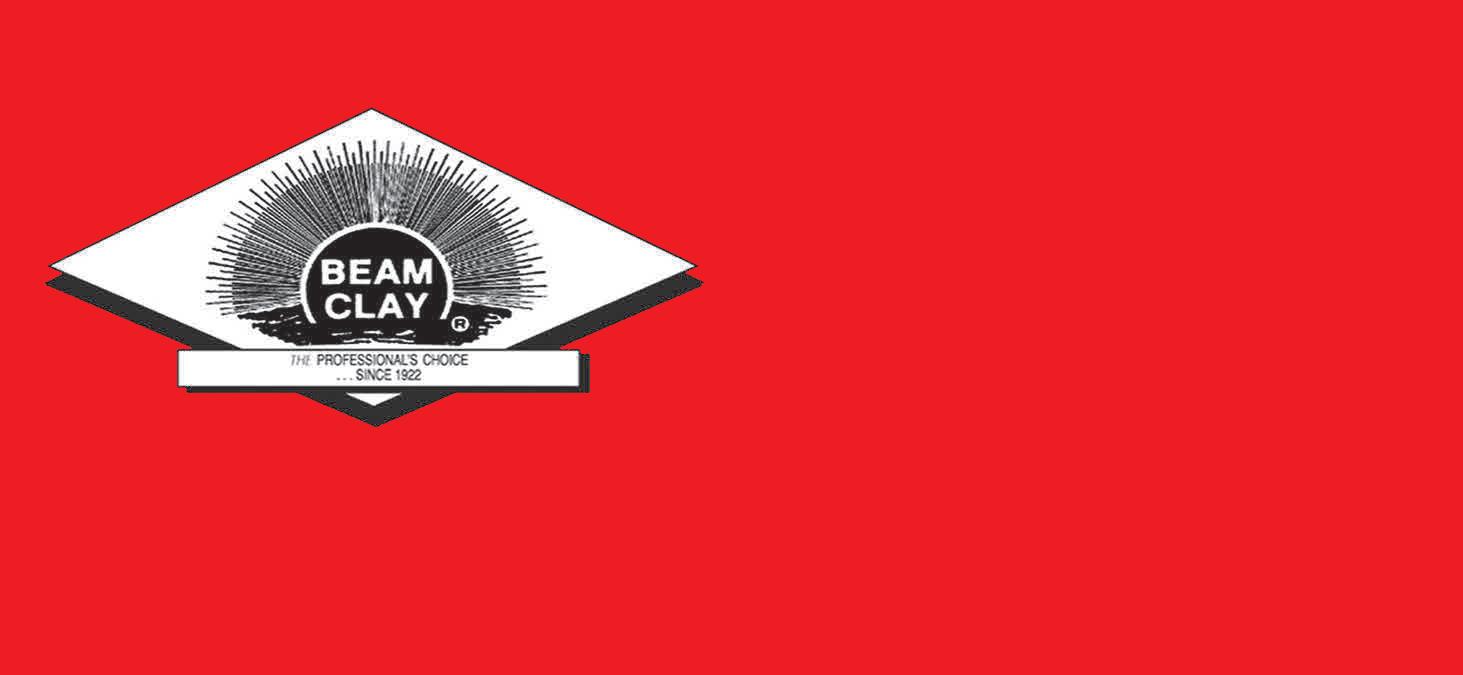
Klein, A.-M., Vaissière, B.E., Cane, J.H., Steffan-Dewenter, I., Cunningham, S.A., Kremen, C. & Tscharntke, T. (2007) Importance of pollinators in changing landscapes for world crops. Proc Biol Sci, 274, 303-313.
Ollerton, J. (2021) Pollinators and Pollination: Nature and Society. Pelagic Publishing Ltd, Exeter, United Kingdom.
Ollerton, J., Winfree, R. & Tarrant, S. (2011) How many flowering plants are pollinated by animals? Oikos, 120, 321-326.
Palmersheim, M.C., Schürch, R., O’Rourke, M.E., Slezak, J. & Couvillon, M.J. (2022) If You Grow It, They Will Come: Ornamental Plants Impact the Abundance and Diversity of Pollinators and Other Flower-Visiting Insects in Gardens. Horticulturae, 8, 1068.
Parrish, J. & Bazzaz, F. (1979) Difference in pollination niche relationships in early and late successional plant communities. Ecology, 60, 597-610.
Sánchez-Bayo, F. & Wyckhuys, K.A.G. (2019) Worldwide decline of the entomofauna: A review of its drivers. Biological Conservation, 232, 8-27.
Strzałkowska-Abramek, M. (2019) Nectar and pollen production in ornamental cultivars of Prunus serrulata (Rosaceae). Folia Horticulturae, 31, 205-212.
Weisenhorn, J. (2021) Annual flowers that attract pollinators. University of Minnesota Extension.
Boxwood has been the choice evergreen ornamental shrub in landscape designs for homes, public gardens, parks, golf courses, and other green spaces; they accentuate garden entryways, give structure to garden designs, edge garden beds, divide courtyards, designate parking areas, fill window boxes, and create labyrinths. This preference is attributed to several features of boxwood plants: low maintenance, deer resistance, and high tolerance to heavy pruning, and to lesser extent, to drought and cold conditions.
This iconic landscape plant, however, is now endangered due to an emerging disease – boxwood blight caused by a fungal pathogen (Calonectria pseudonaviculata). This disease wiped out the English boxwood gardens at the Woodrow Wilson Presidential Library in 2016, invaded and disfigured historic boxwood plantings at the Tudor Place (October 2018), Longwood Gardens (August 2020), and Colonial Williamsburg (July 2021). It also decimated many private boxwood gardens like this one that had been the family treasure for generations. There have been several lawsuits filed by highly valuable estate owners against landscaping companies, complaining on introducing the blight pathogen to their properties.
To protect customers and landscaping companies themselves from getting into such legal battles, the first and foremost important step is to learn what a blighted boxwood plant and planting looks like, so proper actions may be taken to mitigate the damages to both customers and landscapers, as well as other property owners in the same neighborhood and area.
Boxwood blight infection may start in the garden and landscape where newly introduced host plants including boxwood, pachysandra and sweet box are placed, or may be at first randomly scattered depending upon the means by which the blight pathogen is introduced to a property then spread locally. If the pathogen is introduced by purchasing and bringing in infected plant materials, then spread by contaminated domestic
(e.g., dogs, cats) and wild animals (deer), initial infection and blight symptoms usually start low in the canopy, or at the heights at which contaminated animals most likely come in contact with boxwood plants. If the pathogen is spread by contaminated insects and birds, initial infection and blight symptoms may appear wherever the insects and birds land. If the pathogen originates from a nearby property in the neighborhood, it could be introduced by sharing contaminated garden tools, and/or by contaminated runoff water, shoes and other personal belongings. These additional means of pathogen spread often result in new infection and symptoms in lower portion of the canopy.

Boxwood blight has three diagnostic symptoms: 1) leaf spots and blight, 2) black streaks on young stems and branches, and 3) rapid defoliation.
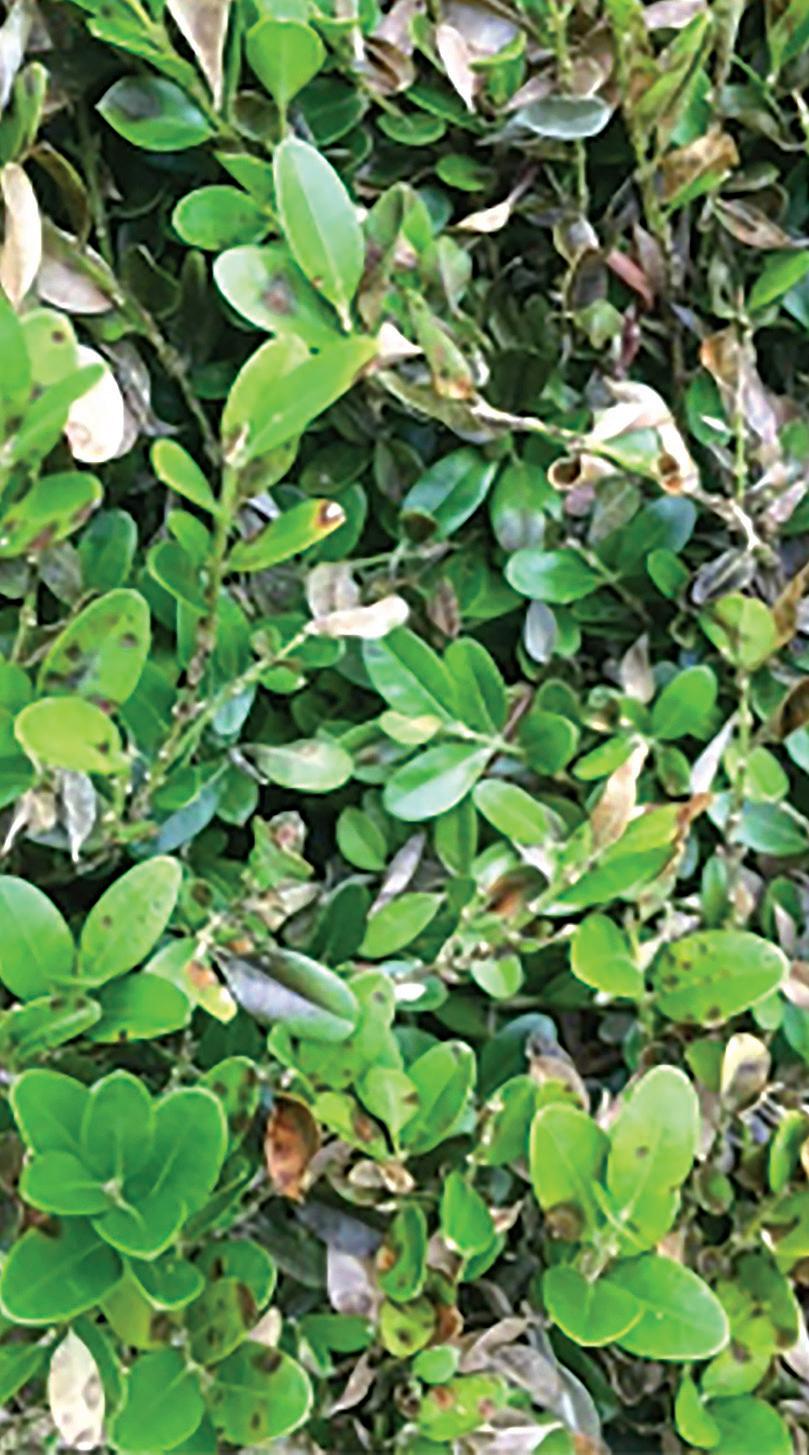

Leaf symptoms begin as small, light to dark black specks that enlarge into discrete spots or diffuse blotches. The spot centers often become tan with an outer ring of black, necrotic tissue. Alternatively, entire leaves may turn completely gray or black without any discrete spot if the pathogen loads are high, plus an extended period of warm and wet conditions. This often results in leaves falling off plants within a week. Leaf symptoms develop more rapidly on English boxwood and other highly susceptible cultivars than those less susceptible ones such as NewGen Boxwood®, Little Missy. Likewise, symptoms develop more quickly on younger than old leaves (Fig. 1).
Black streaks on stems and branches are indicative of an advanced stage of disease development and/or favorable environmental conditions. As shown in Fig. 2, multiple black streaks may develop on individual stems and branches, and this is especially apparent on younger stems. Black streaks may have light tan center, and their length and width may vary greatly, depending upon the age of stems and branches, length of disease development time, and conduciveness of the environmental conditions.
Similar stem lesions may be caused by two other fungal pathogens — Colletotrichum theobromicola, the causal agent of boxwood dieback/anthracnose, and Pseudonectria spp., the causal agent of Volutella blight. The anthracnose pathogen has been seen in Virginia but it is very limited in distribution in the commonwealth and nationally. Comparatively, the Volutella blight pathogen is ubiquitous but opportunistic, only attacking stressed or weakened boxwood plants.
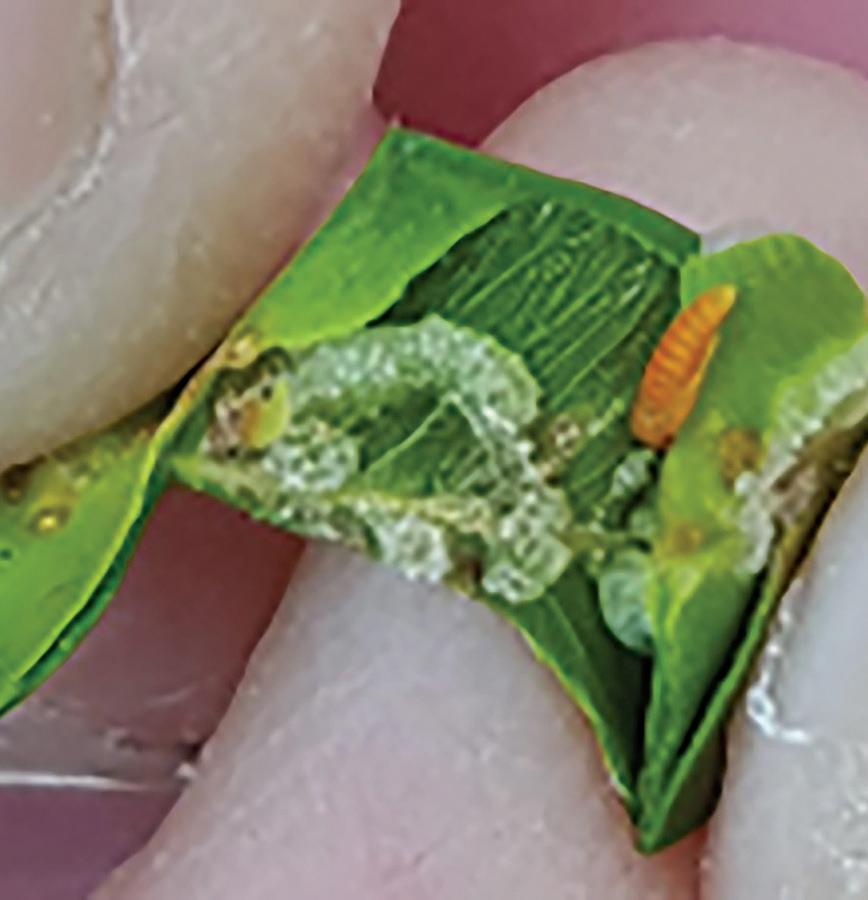
Rapid defoliation (Fig 4) is typical of boxwood blight on severely affected boxwood plants. This symptom separates boxwood blight from Volutella blight and other diseases as well as winter damages. The only other agent known to be capable of causing extensive defoliation is boxwood leafminer (Monarthropalpus flavus). Leafminer feeding on boxwood leaves causes spotting on their upper surface and blisters on the underside. Slicing into these blisters will reveal adults about to emerge (Fig. 3 – left). Also accompanying leafminer infestation is extensive leaf browning (Fig. 3 – right). Boxwood blight does not have any of these symptoms thus can be readily distinguished from leafminer infestation.



Under humid conditions the boxwood blight pathogen also produces distinct disease signs on affected stems/branches (Fig. 5A) and leaves (Fig. 5B). These include white pathogen masses — conidiophores bearing long, narrow, hyaline asexual spores (Fig. 5B). These pathogen masses are visible with the naked eye or hand lens, and they appear almost crystalline under a dissecting microscope (Fig. 5B). Under the same conditions, the Volutella blight pathogen also develops spore masses that are at first white then gradually turn to salmon color (Fig. 5C). Additionally, the Macrophoma leaf spot pathogen produces black dot-like fruiting bodies on leaf surface (Fig. 5D). Thus, boxwood blight can be easily distinguished from Volutella blight and Macrophoma leaf spot. Like the Volutella blight pathogen, the Macrophoma leaf spot pathogen is an opportunistic, weak pathogen.
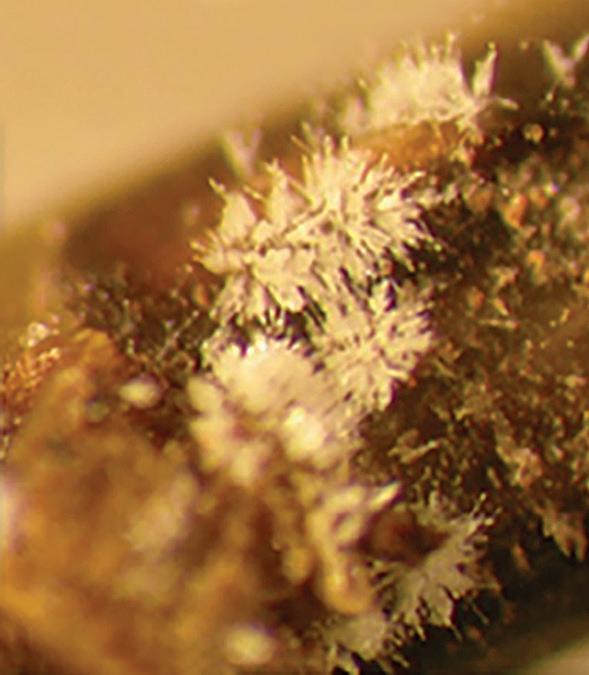


The boxwood blight pathogen spores are sticky, easily attaching to pruners, shoes, other garden tools and personal belongings, and spreading from isolated infections to the entire property and from one property to all other properties wherever contaminated tools are used. Thus, it is highly advisable to walk through the entire boxwood planting on a property and scout for the boxwood blight disease symptoms and sign upon arrival at a job site, and start pruning only if there is no disease symptoms and signs of boxwood blight. Should boxwood blight be suspected, communicate your observations with the customer the importance to take and double bag an affected branch sample then route through your local office of Virginia Cooperative Extension to have it checked by Virginia Tech’s Plant Disease Clinic in Blacksburg or my lab at Hampton Road Agricultural Research and Extension Center in Virginia Beach. Taking this step before starting to work with any boxwood is crucial to preventing pathogen spread and protecting the rest of boxwood plantings on the same property and those in the neighborhood should boxwood blight is confirmed at Virginia Tech.

For more images about the blight disease symptoms and signs on boxwood, pachysandra and sweet box, and general guidelines on how landscapers may help to prevent accidental introduction and spread of the boxwood blight pathogen, please visit the website of Boxwood Blight Insight Group, an international boxwood blight research and education consortium. These topics will be discussed in detail in the coming issues of Virginia Turfgrass.








In turfgrass, the red imported fire ant (RIFA; Solenopsis invicta) is of primary concern both for its potential to create unsightly mounds and its readiness to sting anyone who disturbs it. RIFA entered the US in the 1930s and quickly spread throughout the southeastern states. Currently, RIFA continues to expand its distribution (Fig. 1) with new counties being added to the USDA quarantine map every year.
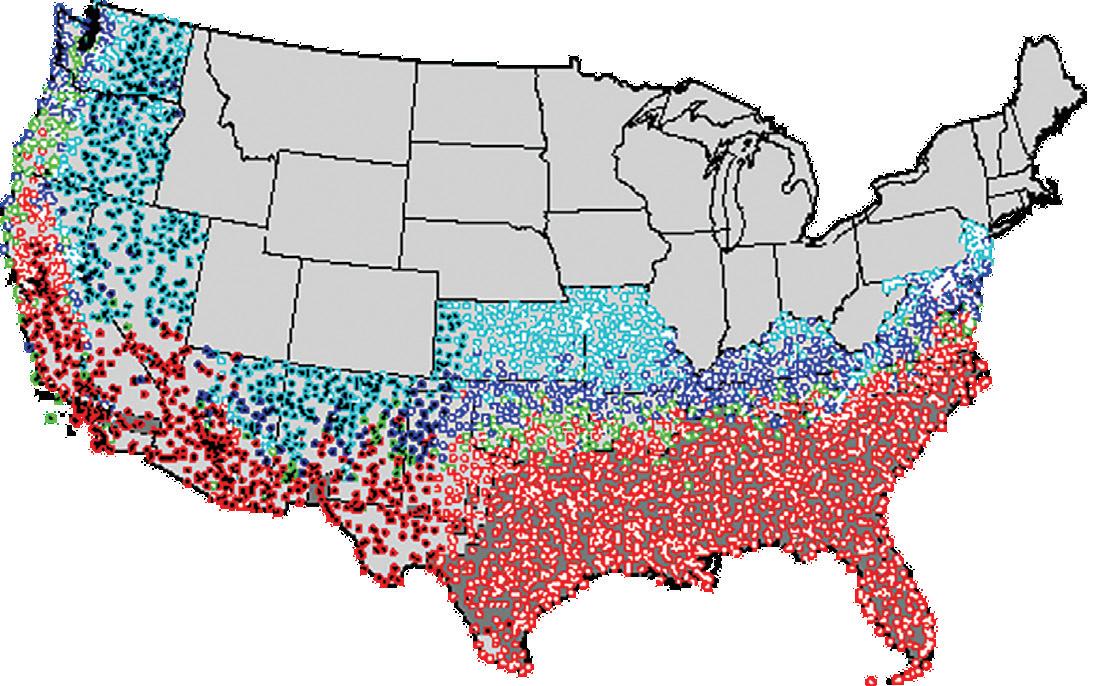
Fire ant expansion into new areas can be attributed to both active movement, with newly-mated queens flying to establish new colonies, and passive movement, through the transportation of infested plant material. RIFA queens typically fly 1 – 1.5 miles to establish a new colony and are capable of flying as far as six miles. In the case of severe flooding, fire ants can also link together to create a raft-like structure and float on the water surface into new areas.
RIFA mounds are more likely to occur in areas of high soil temperature. Turf in full sun or adjacent to an impervious surface such as cement, concrete or asphalt is more likely to attract fire ant activity, particularly in the spring. Fire ants will also take advantage of the extensive root system of trees and large ornamental plants, creating mounds near the base of these plants to use the root network to gain easy access to the water table. Unlike nuisance ants that create mounds with a hollowed-out center with an entrance hole through which they travel, fire ants create domeshaped mounds and travel in and out via foraging tunnels (Fig. 2). Fire ants will sometimes travel for 1 – 2 feet underground before coming to the soil surface in search of food. For this reason, labeling on many bait products will indicate that baits should be placed approximately two feet from the center of a mound for individual mound treatments. This ensures that foraging ants traveling in and out of the nest will be more likely to encounter the product.
“Potential United States Range Expansion of the Invasive Fire Ant.” Imported Fire Ant and Household Insects, USDA-ARS, 5 Oct. 2017, https://www.ars.usda.gov/southeast-area/gainesville-fl/center-for-medical-agriculturaland-veterinary-entomology/imported-fire-ant-and-household-insects-research/docs/potential-united-states-rangeexpansion-of-the-invasive-fire-ant/.Terri Ph.D., Turfgrass Entomology Lab, North Carolina State University
Prior to applying any insecticide for fire ant control, it is essential to confirm fire ants are active and as close to the soil surface as possible. Early in the season, this is usually when air temperatures are in the 50s and after a significant rainfall event. Before application, ensure fire ants are active near the soil surface by placing a potato chip or slice of hot dog 1 – 2 feet from the center of a mound. If fire ants are active, they will find the source of food within 3 – 5 minutes and provide visible confirmation that it is the right time to apply (Fig. 3).

Management approaches for fire ants will depend on a number of factors. Primarily, the number of mounds and required speed of efficacy will determine the best method for application. Application methods can be generally grouped into two approaches: individual mound treatments (IMT) and broadcast applications. Because you are treating each mound individually, this approach is more time-consuming and require large volumes for an effective application. Formulation selection is less important than choosing an appropriate active ingredient, however, for IMT applications, it is best to choose one that has contact activity against fire ants. In an IMT, mounds should be left undisturbed until the equipment and applicator are ready. Products can be applied through soil drench or injection to the top of the mound and should be applied in a large volume to flood down through the tunnels and fill the nest chambers of the mound (Fig. 4). Ideally, enough volume is applied to reach the queen that is likely deep underground. If you are able to reach the queen, this approach can provide long-lasting control and generally uses less product compared to broadcast treatments, which can minimize impact on off-target beneficial insects in the landscape.
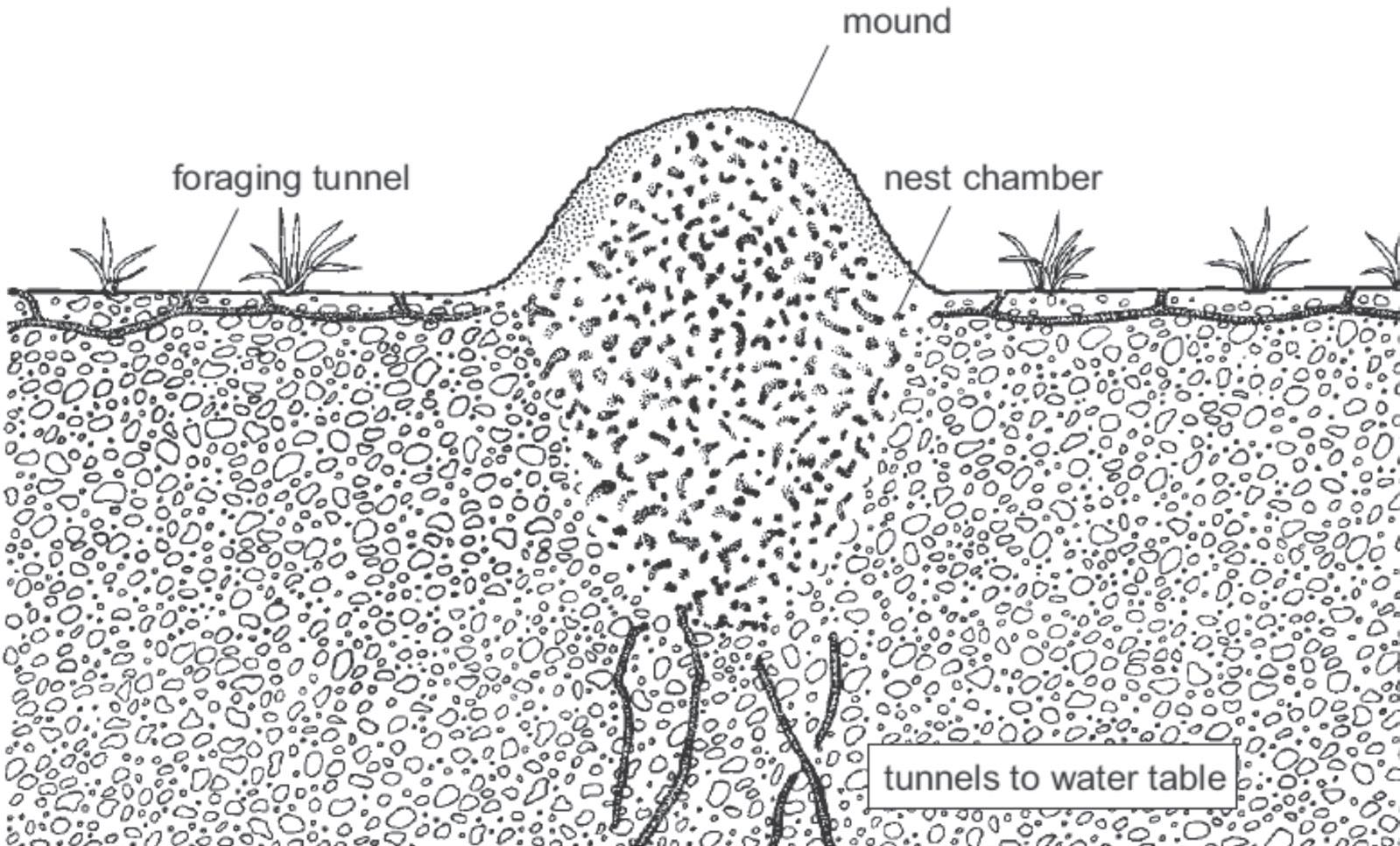
Broadcast treatments are quick and easy to apply – usually in a spreader or sprayer – to cover large areas. Liquid or granular formulations with contact activity can be effective, however, only ants active at the soil surface will be impacted.
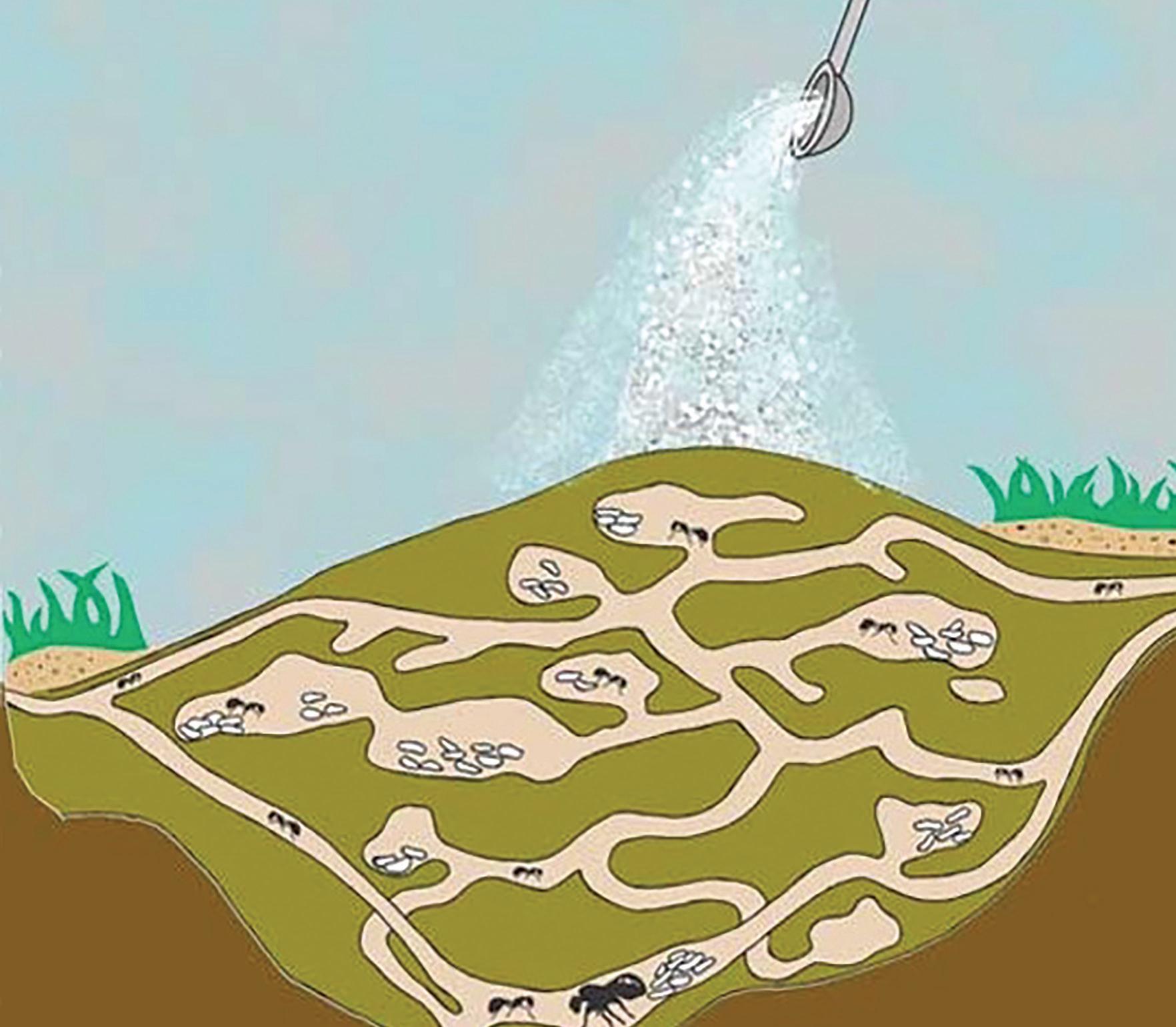 Figure 3: Fire ants foraging on hot dog slice
(Photo Credit: B. Royals, NC State University)
Figure 4: Dry formulation application to Fire Ant Mound Layton, B. “Control.” Fire Ants, Mississippi State University, http://extension.msstate.edu/content/control.
Figure 2: Cross-section of Fire Ant Mound Greenberg, L., and J.N. Kabashima. Red Imported Fire Ant: Integrated Pest Management In and Around the Home. Edited by K. Beverlin, UC-IPM, Dec. 2013, https://ipm.ucanr.edu/pdf/pestnotes/ pnredimportedfireant.pdf. Adapted from Texas Agric. Exten. Serv. File photo.
Figure 3: Fire ants foraging on hot dog slice
(Photo Credit: B. Royals, NC State University)
Figure 4: Dry formulation application to Fire Ant Mound Layton, B. “Control.” Fire Ants, Mississippi State University, http://extension.msstate.edu/content/control.
Figure 2: Cross-section of Fire Ant Mound Greenberg, L., and J.N. Kabashima. Red Imported Fire Ant: Integrated Pest Management In and Around the Home. Edited by K. Beverlin, UC-IPM, Dec. 2013, https://ipm.ucanr.edu/pdf/pestnotes/ pnredimportedfireant.pdf. Adapted from Texas Agric. Exten. Serv. File photo.
Depending on active ingredient, these applications may not have an effect on the colony. An exception to this would be products containing fipronil which will provide much longer lasting control. Unlike IMTs, broadcast applications will impact beneficial insects within the landscape, including native ant species.

Bait products can be applied in either an IMT or broadcast application and can also provide more long-lasting control. Baits must be placed two feet from the center of the mound and kept fresh and dry in order to be effective. If there is significant dew formation on the turf, wait until the areas have dried before placing a bait product. If fire ant control is needed but there is consistent rain in the forecast, give yourself at least a 5-6 hour window for fire ants to forage, find the bait, and bring it back to the nest before it rains. Bait products are considered more “slow-acting” than contact insecticides and provide control within 3 – 14 days of application, depending on active ingredient. See Fig. 5 for a complete list of active ingredients by application method and speed of efficacy.
Biological control options for fire ants are limited. Botanical or plant-derived products are generally not effective. Products containing spinosad, a soil bacterium, can be effective against fire ants but results are inconsistent. Biocontrol products are generally sensitive to environmental conditions and can be negatively affected by prolonged sun exposure, hot temperatures and dry conditions.
As we start to see temperatures increase, keep an eye out for fire ant activity, particularly following significant rainfall events. In North Carolina, we tend to see a sharp uptick in fire ant activity in late February and early March. Early spring is a great time to get a head start on fire ant control, particularly with insecticides with longer residual or bait products. Unlike other insects in turf, fire ants are very consistent and tend to be an issue in the same areas from year-to-year. The key to effective management is to 1) always make sure fire ants are foraging prior to making an application and 2) select the appropriate application method and product for control. For additional resources, be sure to check out NC Turf Bugs (“Resources” tab) for specific fire ant control and quarantine information.
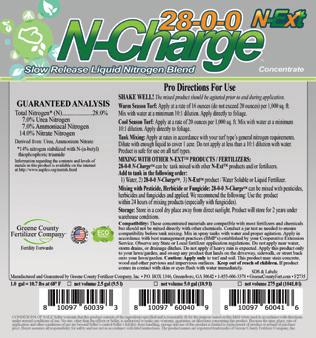


1. Should I disturb the nest to bring the ants to the surface before drenching?
a. Applicators should drench the mound surface first and then break open the mound with a talc-coated shovel to saturate the interior of the mound.




2. Do fire ants sting or bite…or both?
a. Fire ants sting and cause a skin reaction (blister) where the venom is injected. For most people, it’s an itchy annoyance that lasts a week or two. However, in sensitive individuals, reactions are more severe and can require hospitalization. Fire ants do have mandibles (teeth) that they can use to latch on to the skin while they sting. For that reason, the best way to remove fire ants from your body is to wipe points of contact with your hands to physically separate the mandibles from the skin and remove the fire ants.
3. Do fire ants prefer certain soil types?
a. We observe them more often in clay soils but a lot of that has to do with areas where they are most prevalent. They will infest and inhabit basically any type of soil.

4. Can they be moved from place to place on a mower? Or, are they located in mulch?
a. Yes, it is pretty easy to move individual ants from one place to another on any equipment/vehicles. However, unless you move a newly-mated female to a new area, individual ants are not going to establish new colonies. It’s possible that you can have fire ants in a big (and undisturbed) pile of mulch, but the activities of loading and unloading of that mulch generally disrupt and scatter the colony (if there was an entire colony in one). There are generally a bigger problem in stacks of wheat straw that may be used after seeding a new lawn. If these stacks are undisturbed for months, fire ants might relocate a nest under or in a bale. As such, we recommend keeping the bales off the ground in storage.

